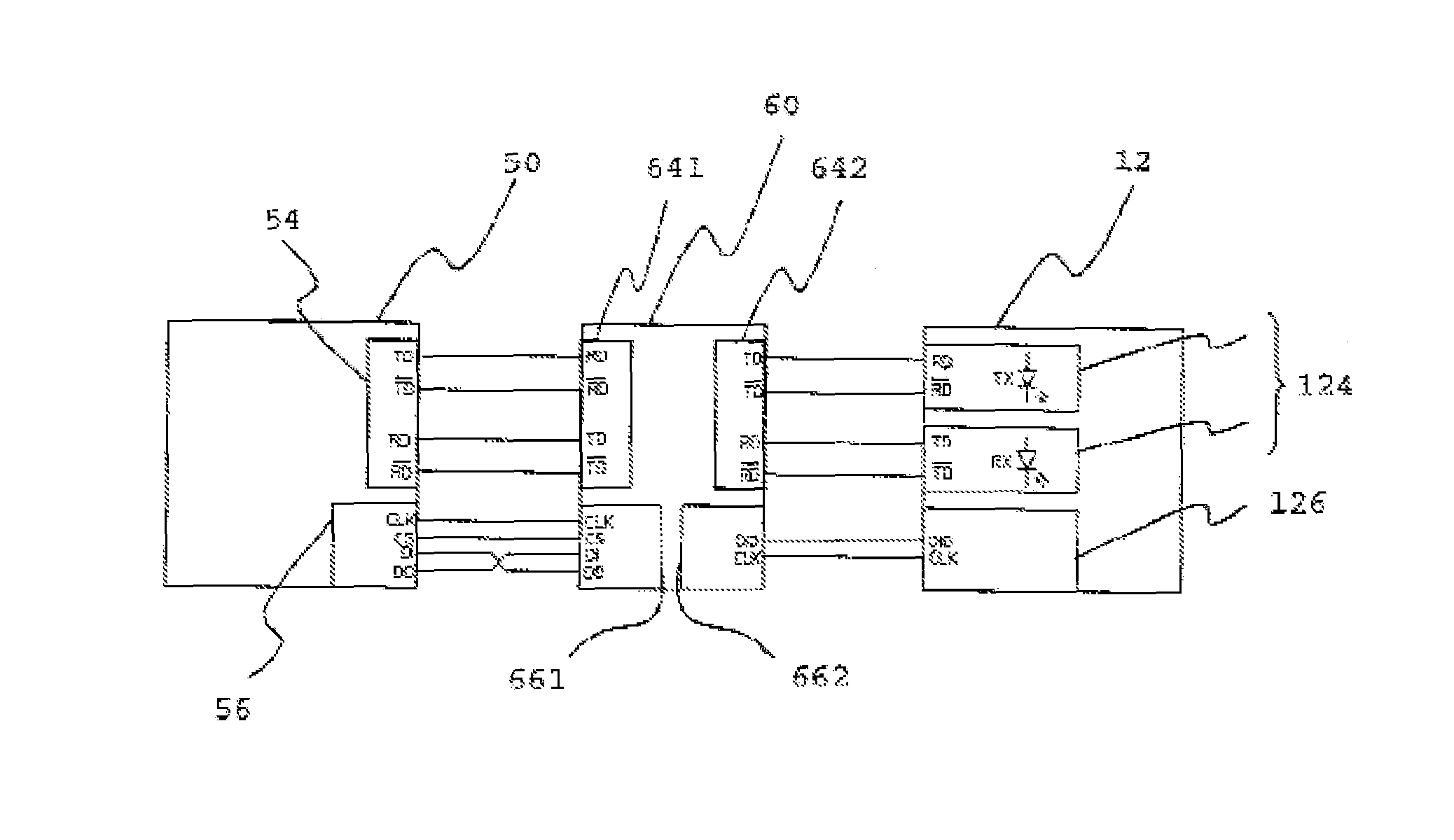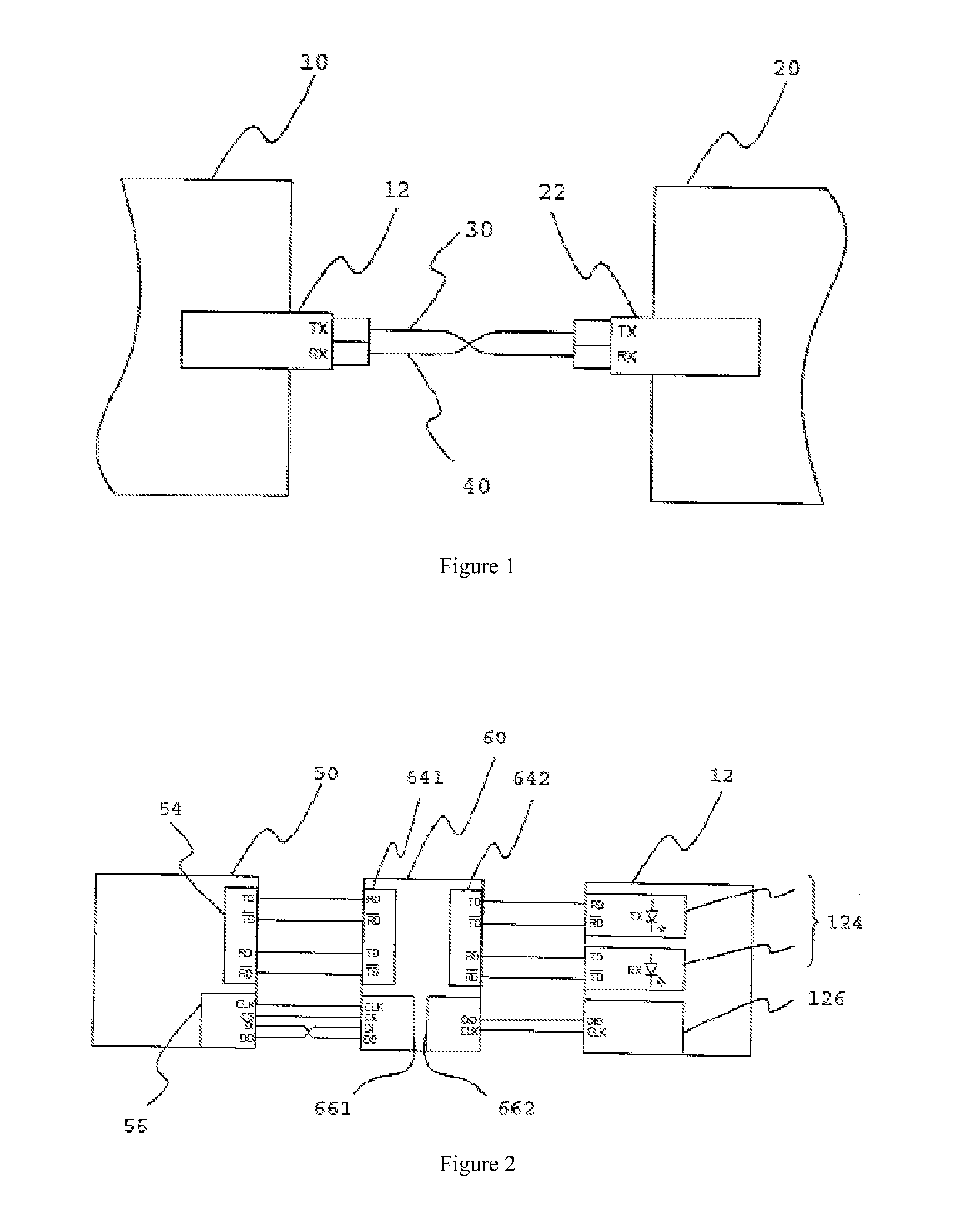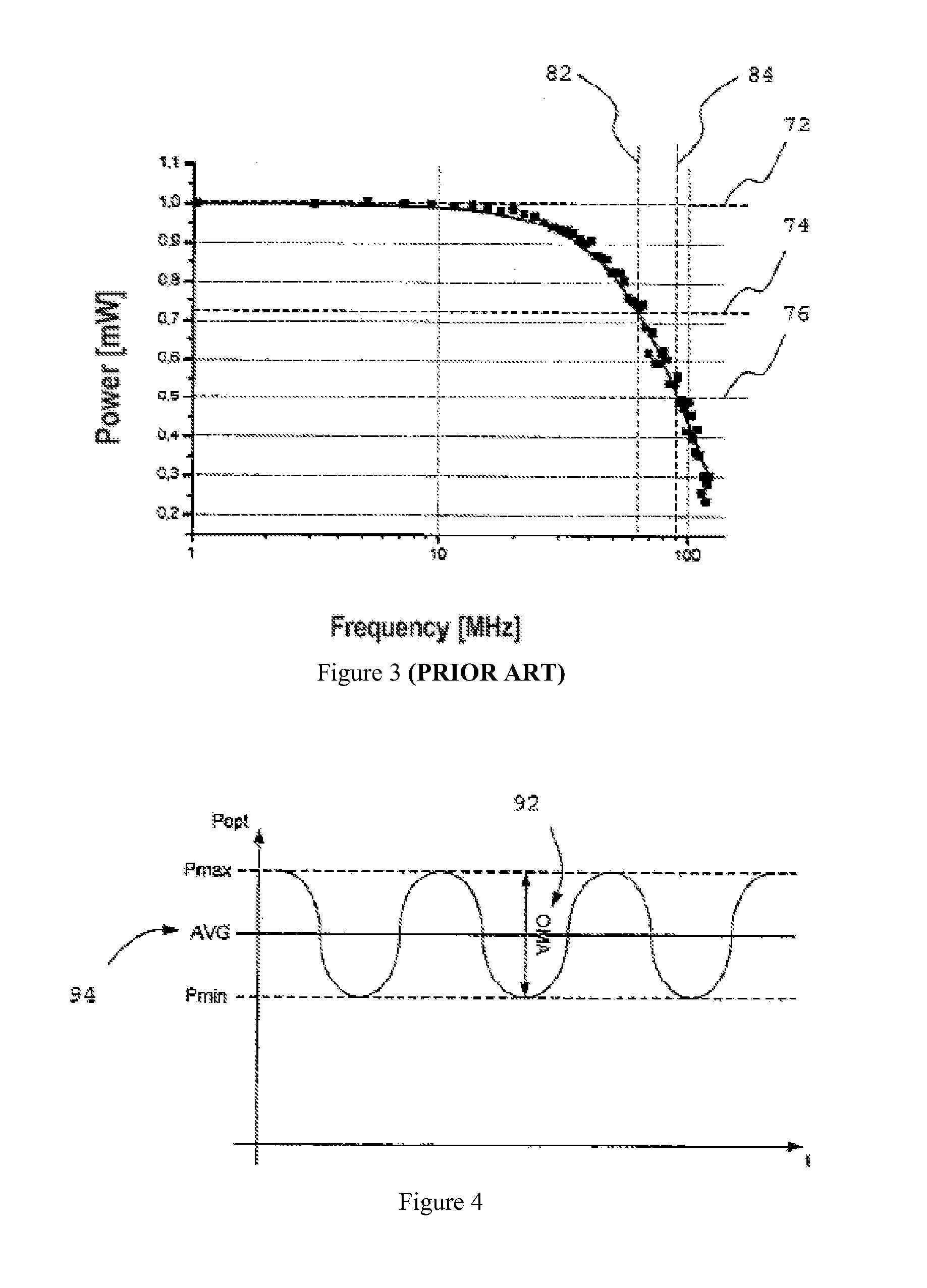Diagnostic method and diagnostic chip for determining the bandwidth of optical fibers
- Summary
- Abstract
- Description
- Claims
- Application Information
AI Technical Summary
Benefits of technology
Problems solved by technology
Method used
Image
Examples
Embodiment Construction
[0059]FIG. 1 shows an optical data, transmission path between a first terminal 10 and a second terminal 20. The terminals 10 and 20 are equipped with a first optical transceiver 12 and a second optical transceiver 22, respectively, which are connected to each other via a duplex-LWL line with a first optical fiber 30 and a second optical fiber 40 for the two respective data directions.
[0060]In this embodiment, POF fibers are used as the optical fibers and the bandwidth test according to the invention is performed before establishing the connection as an initialization of the interfaces. Because a determination of the bandwidth is made possible by the present invention in an especially advantageous way without switching the data rate, the bandwidth test according to the invention can alternatively also be performed after establishing the connection. Furthermore, it can be advantageous to repeat the bandwidth test according to the invention at given time intervals.
[0061]Below, the basi...
PUM
 Login to View More
Login to View More Abstract
Description
Claims
Application Information
 Login to View More
Login to View More - R&D
- Intellectual Property
- Life Sciences
- Materials
- Tech Scout
- Unparalleled Data Quality
- Higher Quality Content
- 60% Fewer Hallucinations
Browse by: Latest US Patents, China's latest patents, Technical Efficacy Thesaurus, Application Domain, Technology Topic, Popular Technical Reports.
© 2025 PatSnap. All rights reserved.Legal|Privacy policy|Modern Slavery Act Transparency Statement|Sitemap|About US| Contact US: help@patsnap.com



